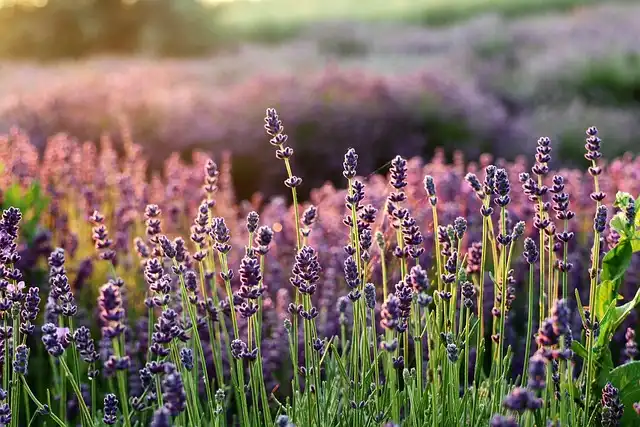Natural Pest Control: Lavender, Mint & Marigold for Grubs

Discover how lavender, mint, and marigold naturally deter grubs and other pests in your garden. These plants offer a fragrant and effective solution, attracting pollinators while repelling unwanted insects.
It means those pests are placed off, or as well perplexed to discover their host plant.
Lavender’s Pest-Repelling Power
You can grow lavender along the edges of borders or yards, using its fragrant flowers and foliage to produce a wall surface that maintains beetles away. Or expand lavender in pots around prone plants for security.
Growing lavender tops the listing of plants that can help get rid of lawn grubs, while marigolds and pepper mint additionally make advantageous friend plants against these bugs. The strong smell additionally masks various other plants that may generally draw in insects.
Contact me with information and uses from various other Future brandsReceive email from us in support of our relied on companions or sponsorsBy sending your information you agree to the Terms & Problems and Privacy Policy and are aged 16 or over.
Mint: A Multi-Benefit Companion Plant
Of all the many comprehensive mint ranges, pepper mint is the most poignant for buddy planting, complied with by spearmint. The aroma produced by peppermint confuses and overwhelms the receptors of numerous bugs, guaranteeing they maintain a risk-free distance from the plants.
The yard bugs stay and are energetic in the dirt, where they can feed on the roots of plants. Grubs are hungry bugs that can damage grass, ornamental plants in blossom beds, and also edible plants.
Mint makes a fantastic buddy plant for several ornamentals and edibles, for a number of factors. Not only does it ward off many bugs thanks to its abovementioned poignant scent, but it likewise brings in valuable all-natural predators and pollinators.
The insects deterred by lavender consist of beetles, of which grubs are the larvae of, in addition to moths, mosquitoes, flies, and a lot more. It implies those parasites are postponed, or as well perplexed to find their host plant. So they keep away and will not lay their eggs near the lavender.
Part of its trick is that lavender consists of natural compounds linalool and linalyl. These compounds are in charge of making it very aromatic, and lots of typical yard parasites dislike this powerful aroma. The solid odor also masks other plants that might normally draw in bugs.
Grubs are the larvae of beetles, and they can be frustrating. The garden insects reside and are active in the soil, where they can feed upon the roots of plants. Grubs are hungry bugs that can harm grass, ornamental plants in flower beds, and even edible crops.
Of course, when you grow mint, you do need to maintain it consisted of. All sorts of mint are vigorous and can spread out swiftly, potentially controling a location. Either grow mint in containers, or plant it in sunken containers in borders to contain the origins.
There are plants you can contribute to your yard concepts to ward off grubs and reduce the possibilities of them ruining your yard. Growing lavender tops the listing of plants that can aid remove yard grubs, while marigolds and pepper mint likewise make valuable buddy plants versus these bugs. Here, we explain why you must think about these plants that ward off grubs.
Drew’s interest for horticulture started with growing vegetables and salad in elevated beds in a little urban balcony yard. He has worked as an expert garden enthusiast in historical gardens and specialises in expanding veggies, fruit, herbs, and cut blossoms as a cooking area gardener. That passion for growing reaches being an allotmenteer, garden blog writer, and generating how-to gardening guides for sites. Drew was shortlisted for the New Ability of the Year award at the 2023 Garden Media Guild Honors.
Marigold’s Natural Defense
It’s a lengthy list that consists of aphids, whiteflies, insects, thrips, wasps, squash bugs, nematodes, and a lot more, copulating up to squirrels, deer, and bunnies. The checklist of targets additionally consists of various beetles.
Lavender is a widely preferred fragrant herb, celebrated for its fragile appearance, wonderful scent, and capacity to attract various pollinators to an area. Along with attracting pollinators and beneficial natural killers, expanding lavender additionally aids in pushing back several bugs as part of buddy planting.
Marigolds do all this thanks to a powerful aroma from a necessary oil it has called thiophene. In addition, marigolds additionally release hazardous chemicals from their roots that deal with some soil-borne bugs.
There are consequences when grubs assault the plant’s origins. Yards can have yellow spots– the grass will certainly likewise deal with damages as animals and birds dig seeking to treat on the soil-borne grubs– and plants in beds and borders might shrivel and die.
1 companion planting2 French marigolds
3 garden grubs
4 lavender
5 mint
6 organic pest control
« Mango Wood Kitchen Trend: Warmth & Luxury for Your HomeTerracotta Tones: Interior Design Trend for All Seasons »
